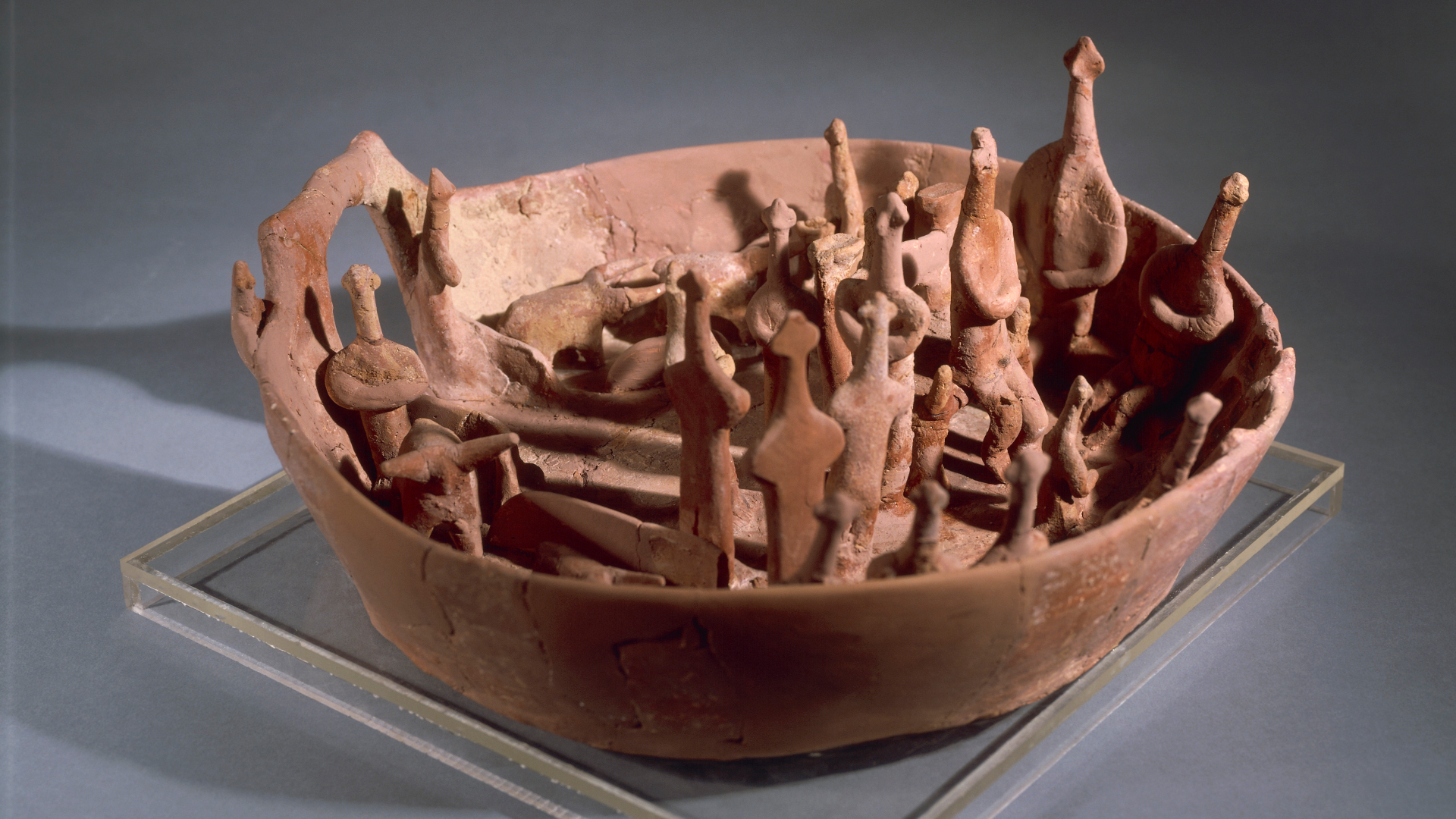QUICK FACTS
Name: Vounous Bowl
What it is: Ceramic vessel with complex figural scene inside
Where it is from: Bellapais, northern Cyprus
When it was made: Circa 2025 to 1850 B.C.
Scholars have debated the meaning of the Vounous Bowl for decades since it was discovered in a Bronze Age tomb in northern Cyprus. While the exact purpose of the unusual vessel is unclear, most experts believe it depicts some sort of sacred scene and may have been used in a religious ceremony.
Excavations at the site of Vounous-Bellapais in the 1930s revealed dozens of tombs from a large prehistoric cemetery. Although many of the tombs had previously been looted, archaeologists recovered a large number of intricately decorated ceramics, including the Vounous Bowl, which had broken into many pieces over the ages.
The Vounous Bowl, which is now in the Cyprus Museum, is shallow with a flat base measuring 14.6 inches (37 centimeters) in diameter and 3.1 inches (8 cm) tall, Louise Steel, an archaeologist at the University of Wales Trinity Saint David, wrote in a 2013 study.
Related: Roman dodecahedron: A mysterious 12-sided object that has baffled archaeologists for centuries
One side of the bowl has a rough, rectangular hole that likely indicates a doorway. Inside the bowl is a complex scene composed of 18 human figures, four cows in pens and some furniture.
Opposite the doorway is a structure with three pillars linked by two cross bars with wavy lines — which may be a shrine — and a human figure kneeling in front of it. Some figures are seated on a bench with their arms crossed, and one figure appears to be wearing a headdress and sitting on a kind of throne.
In a 1994 study, Edgar Peltenburg, emeritus professor of archaeology at the University of Edinburgh, suggested that the Vounous Bowl had three distinct scenes inside — including a pastoral scene with the cows; an indication of male power with the individual wearing the headdress; and a representation of the spiritual world with the kneeling figures. Together, these scenes reflected a new, hierarchical social order that was developing at this time.
MORE ASTONISHING ARTIFACTS
Steel wrote that the Vounous Bowl was likely a means of symbolic communication, created at a time when the quickly growing population began engaging in elaborate communal feasts and elaborate burial rituals. The use of modeled figures to create a scene inside the bowl is extremely rare in prehistoric Cypriot vessels, so the Vounous Bowl was likely special in some way and buried with someone held in high esteem by their community.
The Vounous Bowl was made at a time of social transition and rapid cultural innovation, and “almost certainly it was meant to be viewed or displayed in significant ceremonial occasions,” Steel wrote. “The Vounous Bowl is just one example of an increased display of symbols within the funerary context.”












